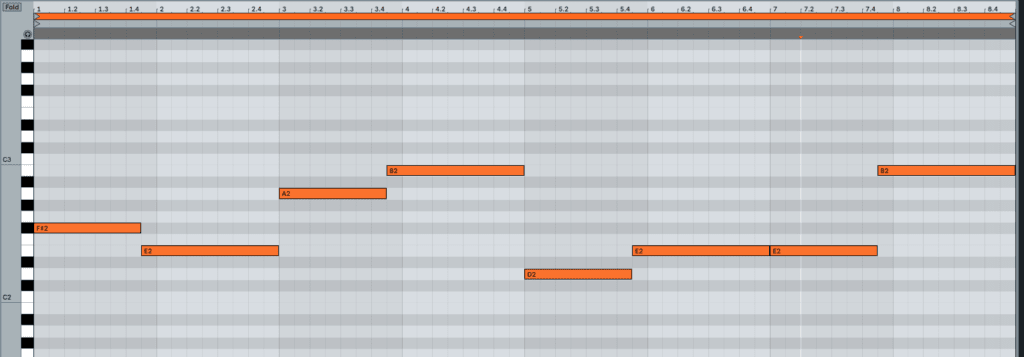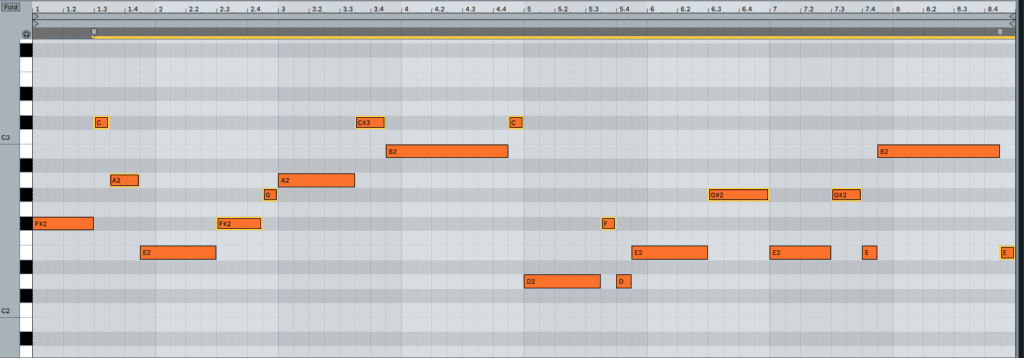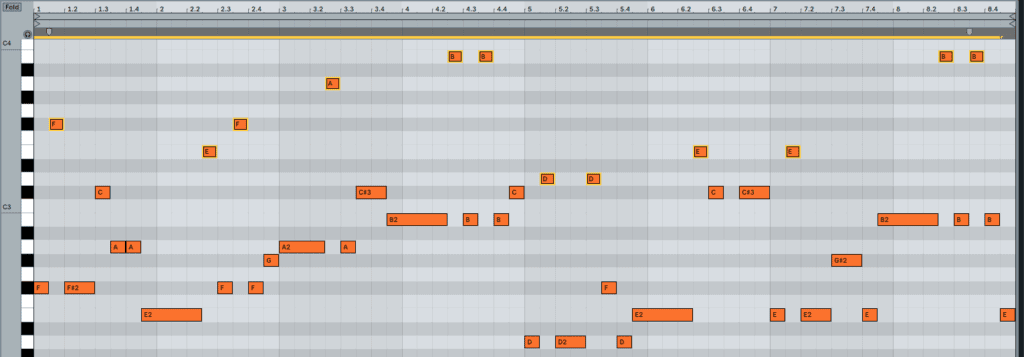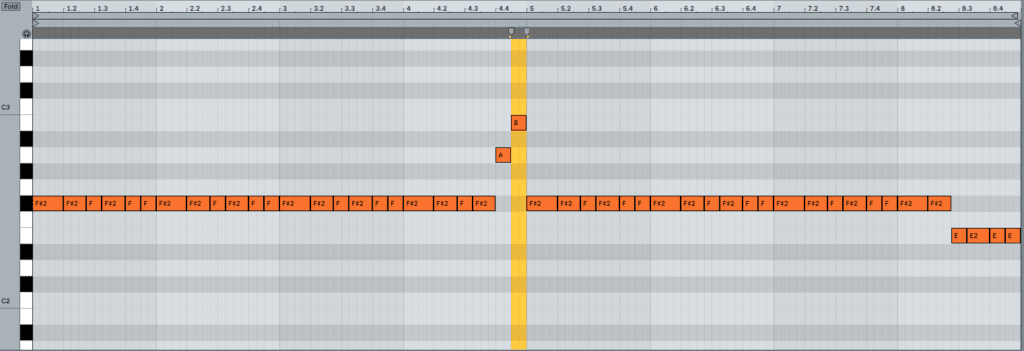Today I’m teaching you how to make your basslines more interesting.
With the techniques that I’ll show you today, you’ll be able to make your tracks more dynamic, which will help you hook your listeners and keep them interested in your tracks. I’ve used these techniques on a lot of my tracks, like the one you can listen bellow:
One of the most important elements of the track is your bassline. We’ve talked about how to mix bass in this post, but we haven’t really talked about how to compose the best basslines. At the same time that your basslines could be mixed to perfection, it could be something really static or something really dynamic, which would make it more interesting.
Therefore, in this post we will see tips and tricks to enhance your bassline and, for that, I’ll use the following midi as a starting point and will enhance it as we progress. Take into account that these tips could apply to any genre. You just have to make sure you apply the concepts instead of the actual changes.

If you’re more of a viewer than a reader, check out the video below that cover some of these tips covered in this post:
To make things even clearer, these are the techniques we’ll cover today:
- Differentiating 4 Bar Loops
- Enhancing the Root Notes of Your Basslines
- Basslines Octave Jumps
- Create Movement in Your Bassline Midi
- Add Movement Through Sound Design
- Use a Real Bass Layer
- Create Pitch Slides
Differentiating 4 Bar Loops
To make the scale a little more interesting, I changed two of the notes into something different, as you can see below. If you can’t spot the changes, the notes start at 5. and at 7. were altered.

The reason I did this was to create some variation from the first 5 bars to the last 5 bars. This way, you slightly alter the vibe, which is helpful to generate movement in your bassline and keep the listener interested.
Enhancing the Root Notes of Your Basslines
When I had this, I thought that was too static, and that needed more movement. I always like how Paul Arcane’s Everest goes up and down, changing notes every now and then, so I made the same thing:

You can see the selected notes, which have a slight yellow border around it, changed a bit how the bass was. It went from something a bit static to a more dynamic bassline, with a lot more variation. Again, the purpose is to make a more dynamic bassline and keep the listener always interested.
Basslines Octave Jumps
Now that I had what I wanted for the root of the basslines, I made some octave jumps with the bass notes, which look like this:

This creates even further movement, and it’s a technique many producers use in their tracks. Jack Wins uses it in his track Animals, Don Diablo does this in his track Bad, Chris Lake does this in his track Turn off the Lights, and many others use this technique because it creates movement in your track without changing the note.
Create Movement in Your Bassline Midi
However, there are moments where you’re just going to focus on playing one note, like during a drop 1 for progressive genres and sometimes throughout the whole track for genres like Tech House or Techno. This does not mean you can still make some slight changes in the bassline.

Here, we have two kinds of changes:
- The first is that every end of a 4 bar loop, there is a note change;
- The syncopation (rhythm) played with the bass changes along the course of a bar, as you can see that the notes have different lengths. Along with bass notes, you could also change the rhythm in the end of 4 bar loops to create more dynamism in your track. Here’s another example of how this can be done, with rhythm changes in the beginning and end of each bar.

Add Movement Through Sound Design
In a track I’m making right now along with my friend 7oceans, when I sent it to some friends for feedback, they all commented that the bass was a bit static and this happened since we’re using long notes in the bassline, as you can see below:

At the same time, I didn’t want to change the bass notes, so I had to change the sound design of it. Therefore, we went into the mid bass and did a BUNCH of automation with Serum and WOW2 filters. Notice how channel 58, for example, has the WOW2 cutoff automated almost randomly, which is what we wanted to make the bass more dynamic.

Use a Real Bass Layer
Another thing that you can do to enhance your basslines is use a real bass or shape your bass midi like a real bass. Therefore, instead of static long notes as we’ve seen in the two examples above, we could use something that simulates a bass, which normally plays 1/8th notes, like this:

Another use of a real bass layer could be to enhance the sound design as well. A real bass never plays in the same exact way, and it could either enhance the low end by making it more uneven (different velocities) or it could also enhance a mid bass by having the richness of frequencies a string would generate.
Create Pitch Slides
Lastly, another thing you can do to enhance your bass midi is creating slides in it. This is more applicable to genres that have pluckier basses, like House music, since it generates a downward/upward slide which may not be the best for progressive genres. Look at the example below:

In this example, the bass slides 12 notes down (one octave), which makes the bass go from a static “tamm” to a more dynamic “tauumm”, more like a sub drop. Take into account that you could do this with lead sounds if you’re producing something more big room as well.
———————
I hope you’ve learned something new today about how to make your basslines more interesting. It will certainly help improve the quality of your tracks and make them more dynamic, which is good to keep listeners interested.